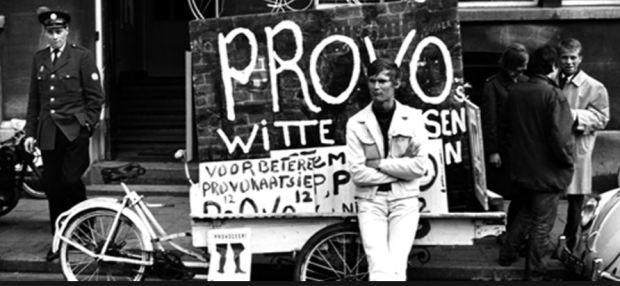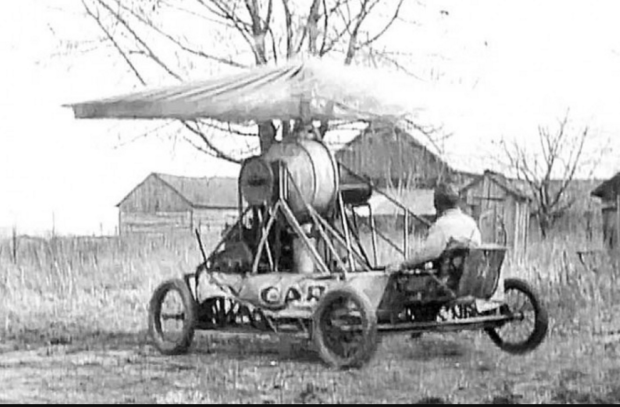
Can on-street parking fees really help places with poor public transport?
The short answer is yes!


The short answer is yes!
– Esther Anaya-Boig, Doctoral researcher at Imperial College London
 I have just returned from the latest Velo-city Global Cycling Summit organized this year in Arnhem-Nijmegen, The Netherlands. The best part of the conference experience for me was that it gave me an opportunity to catch up with so many old friends and making new ones who share my deep interest in cycling as a mobility form and as a social act.
I have just returned from the latest Velo-city Global Cycling Summit organized this year in Arnhem-Nijmegen, The Netherlands. The best part of the conference experience for me was that it gave me an opportunity to catch up with so many old friends and making new ones who share my deep interest in cycling as a mobility form and as a social act.
I appreciate the hard work and good intentions of the many many people who have contributed and made this event possible. However upon considerable reflection on what I saw and heard during the three days of the conference and associated events, I would now like to share some views and reactions, with all due respect of course.
Continue reading

FOR THE RECORD AND IN BRIEF:
A Slow City is an urban development vision and quantifiable target, the first step of which is (a) to reduce traffic accidents and their human and economic costs to zero in the city, by (b) strategically slowing down traffic, over all the parts and the system as a whole. This gives the city a measurable target output (accident data and on-street and in-vehicle ITS feedback) for evaluation and management purposes, and an innovative platform to link and serve other sustainable projects and programs which are consistent to the theme: reforms and improvements that are Better | Cheaper | Safer.
SLOW CITY PENANG – AN INVITATION
From the New Mobility Fine Arts Collection, Summer 2017. From 1 July – 1 September
An online exhibit of shared photos, drawings, renderings, street art, child scribblings, videos, poems, proposed projects events . . . .illustrating these two very different sides of life in Penang: fast and slow. the good, the bad and the at times very ugly.
– See https://www.facebook.com/NewMobilityArts/ for details
What were the weaknesses of our collaborative summer 2016 push

Late night thoughts on some of the creative thinkers who over the last five decades have, each in their own highly individual ways, entirely reshaped our views of a just, efficient and sustainable city.
Not to be too aggressive here, but if you, as a planner, decision-maker, activist or student, are not familiar with the thinking and accomplishments of a fair number of these champions of sustainable transport, sustainable cities and sustainable lives, then you have some important homework to do before you can really dig in, understand and make a contribution. And in each case the Wikipedia profiles provide only a preliminary introduction to get you started, along with a first round of references to their work and contributions sufficient for you to start to understand their genius and contributions.
Let’s have a look at my personal shortlist of sustainability heroes, based entirel on A sample of people whom i have had the honor to know and work with. (You will no doubt have your on list, so please make it known and share them with slowcity@ecoplan.org.).

Useful background references from the archives of World Streets to lend a hand to planners, policy makers, researchers, NGOs, students, media and others concerned with the challenges of sustainable cities in general, and in particular those of calming traffic speeds in combination with other complementary measures to change, to improve and to soften the face of your city.
25 Feb. 2018. Please note: Following to be updated to accommodate latest findings.

Peripheral vision loss (grayed area) of driver at 70 kph on city street. Graphic by: WRI. Notice anything?
Text extracts from article from TheCityFix of 9 May 2016. Full text and excellent didactic graphics at https://goo.gl/9tydC6

Car Free Day in Bogota Colombia 2016

Credit: Simphewe Nkwali (Eco-Mobiliy Johannesburg
The Slow Movement) advocates a cultural shift toward slowing down life’s pace. It began with Carlo Petrini‘s protest against the opening of a McDonald’s restaurant in Piazza di Spagna, Rome in 1986 that sparked the creation of the slow food movement. Over time, this developed into a subculture in other areas, like the Cittaslow organisation for “slow cities”. The “slow” epithet has subsequently been applied to a variety of activities and aspects of culture.
What is more important to you this morning? That your trip is fast? Or quick?
 The construction of a well-defined, broadly accepted agenda for New Mobility until the present time has been sadly lacking. But what we and a numb er of our international colleagues have managed to develop over the last two decades is a certain number of agreed basic principles spanning many different areas and kinds of operational situations, but somehow until now we have failed to put them all together into a well-defined, convincing operational and policy package. We think of this as the move toward a new paradigm for transport in cities – and it all starts with . . . slowing down.
The construction of a well-defined, broadly accepted agenda for New Mobility until the present time has been sadly lacking. But what we and a numb er of our international colleagues have managed to develop over the last two decades is a certain number of agreed basic principles spanning many different areas and kinds of operational situations, but somehow until now we have failed to put them all together into a well-defined, convincing operational and policy package. We think of this as the move toward a new paradigm for transport in cities – and it all starts with . . . slowing down.
Today I would like to extract and comment on some of the graphics and thoughts developed by our colleague Carlosfelipe Pardo in a presentation which he entitled “The psychology of urban mobility”. I have extracted from his presentation three sets of images which I would now like to present you and comment briefly. (For the full original presentation please click here.)

To understand Luud Schimmelpennink’s White Bicycle Plan, it helps to have a look at the broader context of values, philosophy and politics that were prevailing in Amsterdam at that time – the Provos, a Dutch counterculture youth movement in the mid-1960s.
And if one concludes that this was more or less what was going on in other parts of Europe and North America, you would be right. And a bit wrong. The Dutch were digging deeper. At least this part of Dutch society was.

The Slow City /New Mobility Collaborative is a joint venture launched in late 2016 by Luud Schimmelpennink (The Netherlands)) and Eric Britton (France/USA) as an open public interest forum building on their extensive international competence, experience and networks in the broad area of ecological, environmental and social innovation to improve quality of life in and around cities — and specifically in support of sustainable and equitable mobility and creative use of public space. The two principals have long collaborated on an ad hoc basis, and decided that the time has come for a forceful joint effort targeting the period 2017-2020, from the strategic objective of obtaining sharp reductions of transport-related effluents in support of the Paris COP 21 agreement — https://en.wikipedia.org/wiki/Paris_Agreement
Proposal: a 2017 Amsterdam Brainstorming Slam on Slow Cities

From the xCar archives – https://www.facebook.com/groups/worldcarshare/ (218 members)
USA. Inventor John W. Pitts, pathological inventor, notable primarily for his attempts at building a flying car and actually get it off the ground, the “Sky Car”. Source: The Old Motor, http://theoldmotor.com
The “Sky Car” was powered a four-cylinder engine. It did get off the ground by roughly eight inches or so and the “flight” ended. It was obviously staged for the camera and unwisely located right next to a tree.